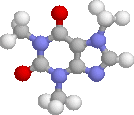|
|
|
|
|
|
|
|
|
Dr Ahmet Kertmen
| 2022-10 - obecnie
|
|
|
Stażysta podoktorski
|
|
|
 WF UAM pokój: 133 WF UAM pokój: 133
 +48 61-829-5247 +48 61-829-5247
 ahmker@amu.edu.pl ahmker@amu.edu.pl
 0000-0002-6879-4404 0000-0002-6879-4404
 26867805300 26867805300
|
|
|
Zainteresowania naukowe: | nanomaterials, organic / inorganic nanoparticles, core-shell nanoparticles, colloids, surface-stabilized lipids, targeted delivery, nanobiotechnology, surface chemistry, pharmaceutical chemistry, supramolecular chemistry, synthetic organic chemistry, biomimetics
| |
|
|
|
|
|
|
Publikacje
Seminaria
|
5. |
Kertmen A., Przysiecka Ł., Coy E., Popenda Ł., Andruszkiewicz R., Jurga S., Milewski S. |
|
|
|
|
|
Langmuir, 35(44), 14397-14397 (2019) |
|
|
DOI: 10.1021/acs.langmuir.9b03088 (Pobrane: 2020-12-30) |
|
|
|
4. |
Kertmen A., Przysiecka Ł., Coy E., Popenda Ł., Andruszkiewicz R., Jurga S., Milewski S. |
|
|
|
|
|
Langmuir, 35(15), 5281-5293 (2019) |
|
|
DOI: 10.1021/acs.langmuir.8b04250 (Pobrane: 2020-12-30) |
|
|
|
3. |
Kertmen A., Barbe E., Szkoda M., Siuzdak K., Babacic V., Torruella P., Iatsunskyi I., Kotkowiak M., Rytel K., Estrade S., Peiro F., Jurga S., Li Yanguang, Coy E. |
|
|
|
|
|
Advanced Materials Interfaces, 6(3), 1801286 (2019) |
|
|
DOI: 10.1002/admi.201801286 (Pobrane: 2020-12-28) |
|
|
|
2. |
Kertmen A., Torruella P., Coy E., Yate L., Nowaczyk G., Gapiński J., Vogt C., Toprak M., Estrade S., Peiro F., Milewski S., Jurga S., Andruszkiewicz R. |
|
|
|
|
|
Langmuir, 33(39), 10351-10365 (2017) |
|
|
DOI: 10.1021/acs.langmuir.7b02743 (Pobrane: 2018-03-20) |
|
|
|
1. |
Tadyszak K., Kertmen A., Coy E., Andruszkiewicz R., Milewski S., Kardava I., Scheibe B., Jurga S., Chybczyńska K. |
|
|
|
|
|
Journal of Magnetism and Magnetic Materials, 433, 254-261 (2017) |
|
|
DOI: 10.1016/j.jmmm.2017.03.025 |
|
|
|
2. |
dr Ahmet Kertmen
|
|
|
2026-03-06
|
|
|
|
|
|
|
1. |
dr Ahmet Kertmen
|
|
|
2023-05-12
|
|
|
|
|
|
|
|
|

